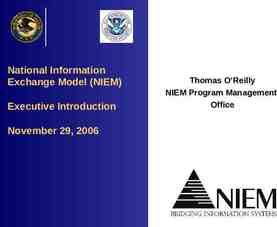TAX CREDITS 101 A Brief Description of the Low Income Housing
26 Slides2.71 MB
TAX CREDITS 101 A Brief Description of the Low Income Housing Tax Credit
In the beginning: The program was born in 1986 out of the changes in the tax code under Ronald Reagan. Prior to 1986 investors in real estate could accelerate the depreciation schedule to increase tax losses. The new tax code prohibited accelerated depreciation and only allowed straight line depreciation (typically 27.5 years for buildings)
The result: Congress had to find a way to incentivize individuals to invest in real estate that was affordable to renters. That incentive is a dollar for dollar tax credit for an investor in affordable housing. The Low Income Housing Tax Credit was born!
IRS Program in all 50 States Program is too large for the Treasury Department to manage Delegated the responsibility of managing the program to State Housing Finance Agencies In Georgia – The Department of Community Affairs / Office of Affordable Housing
How does the program work? Three Components Rent Calculation (Income) Debt Equity
Setting the Rents Rents are typically set to be affordable to persons earning 50% and 60% of the Area Median Income based on household size Income Limits are published by HUD and can be found at www.huduser.com A Utility Allowance is deducted from the Gross Rent to determine the Net Rent charged to the resident.
Debt Tax credit projects typically have some form of debt Conventional debt Soft Loans (HOME Loan, CDBG, AHP Grants) Home Loan in Georgia is a 1% loan that can amortize or have a floating payment based on the projects finances.
Equity Tax Credit Equity is calculated two ways: The Basis Method – add all “good” costs and multiply by 9% The Equity Gap Method – Total Development Cost less debt and grants divided by 10 and then divided by the price the investor is paying for the tax credit. Must use the lesser of the two calculations
Why are the tax credits important? CONVENTIONAL APARTMENT Typically 80% debt 20% Equity TAX CREDIT APARTMENT Often 40% debt or less Equity Equity Debt Debt
The lower the debt on the property the less rent has to be charged to cover the mortgage payments In return for the tax credits and the additional equity that results, the owner signs a Land Use Restrictive Covenant (LURC)agreeing to keep the rents low for a 30 year period That is what makes it “Affordable Housing”
The Ownership Structure Syndicator GP Investor LP - The Investor/Syndicator – LP The General Partner The Operating Partnership The Project Developer
The Development Team Investor/ Syndicator State Tax Credit Agency Lenders General Contractor Management Agent Architect Engineers Attorney Owner/ Developer Accountant
Investor/Syndicator The Investor/Syndicator’s Role Provide Substantial Financial Contributions to build or rehabilitate the Project The Investor/Syndicator’s Benefit Tax Credits offset income tax due Cash Flow Distributions Tax Losses Potential Sale or Refinancing Proceeds How They Accomplish Their Goals Require the General Partner and/or Developer to Guarantee Delivery of Tax Credits Including a Lease-up Schedule Guarantee Operating Deficits Guarantee Completion of the Project Guarantee Continuing compliance of the Project.
The Housing Finance Agency The Housing Finance‘s Agency’s Role Allocate IRS Low Income Housing Tax Credits that are then sold to the Investor LP/Syndicator Potentially Allocate other Financing to the project The Housing Finance’s Agency’s Benefit Decent, Safe, Affordable Housing as required by IRS Tax Code How They Accomplish Their Goals Monitor Tax Credit Compliance and Report any Deficiencies to the IRS
The Developer The Developer ‘s Role Apply for and obtain tax credits and other financing. Provide Guarantees to the Investor LP insure delivery of tax credits Provide Guarantees to the Lenders to insure completion Coordinate all Development Team Members Provide expertise to the General Partner in the development process, negotiate contracts, provide recommendations to General Partner, provide construction management, tax credit compliance and asset management. The Developer’s Benefit Developer Fee Potential Cash Flow-Asset Management Fee How They Accomplish Their Goals Development Agreement between Owner/General Partner and Developer
How do you get a tax credit deal? Each state housing agency creates a Qualified Allocation Plan (QAP) Essentially the “Rule Book” for putting a project together Threshold and Scoring drive a tax credit deal Threshold Section lists things that must be done to be considered for funding Scoring Section lists things that a developer can do to make their deal accumulate more points to improve the chances of getting an allocation of credits.
Threshold Site is properly zoned for the proposed project Water and Sewer availability with adequate capacity Required amenities Outlines underwriting criteria
Scoring Resolution of Support Redevelopment Areas CBDG Funds Site Proximity to goods and services Higher quality building materials “Green Building” techniques Set rents to serve the lowest income residents
Financial Overview Tax Credit properties are not cash flow driven Developer Fee driven
What do tax credit developments look like?
Single Family Tax Credit Development
Multi-Story Senior Corridor loaded building with elevators
2 Story Family
Questions?































